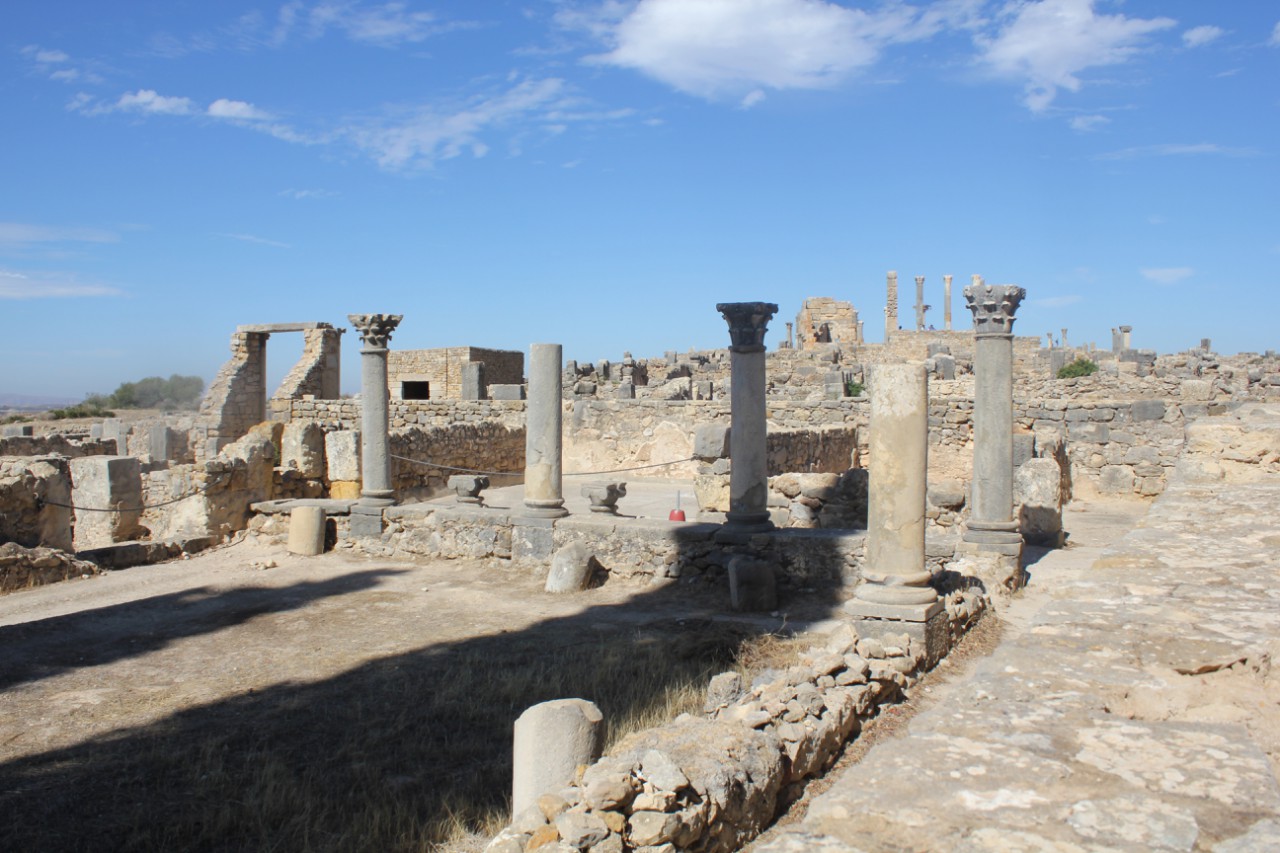
At 9am, or earlier if it suits you better, your experienced English speaking driver from Fes Authentic Tours will pick you up from your accommodation to begin a memorable day trip to three of Morocco's most interesting and beautiful sites : Meknes, Volubilis the roman ruines and Moulay Idriss.
| Transport in a comfortable A/C vehicle (a 4x4 or Mini Van). | |
| Pick up and Drop off at your accommodation. | |
| Lunch and drinks. | |
| Small admission charge for some monuments. |
| Pick up | 9 am |
| Drop off | 7 pm |
| Duration | Day Trip |
| Start | Fes |
| Finish | Fes |
It's only an hour and a half's drive from Fes, through the verdant green agricultural lands of the Saiss plain, to your first stop of the day the ancient Roman remains of the city of Volubilis. In Amazigh, the language of the local Berbers, the area is called Ouallili , which means oleander, as the beautiful pink flowers of the small tree can be seen everywhere around the city all year long, but especially in the summer. UNESCO have named Volubilis as an important archaeological site of World Heritage Status and it's easy to see why as you wander the near two-thousand-year-old streets. Though the Lisbon earthquake destroyed much of the city and pillars were looted to build the gates of Meknes, the impressive Triumphal Arch remains standing, many Corinthian columns, two public baths, olive presses in many fallen houses and businesses, as olive oil provided the wealth of the city, the basilica and a temple dedicated to the three greatest gods of Rome; Jupiter, Juno and Minerva. Perhaps of particular interest are the well-preserved mosaics found in many houses along the main street of the Decumanus Maximus. These show scenes from myths and legends such as Orpheus, Heracles, the Four Seasons and even a drunken acolyte of Bacchus riding on his donkey facing the wrong way! Often the comparative wealth of the residents can be told from the quality of the mosaics, the richer folk had larger mosaics with more colours and smaller tiles making them up, whilst less well-off people have smaller ones with fewer colours and bigger tiles.
A short ride to the pretty little town of Moulay Idriss. Half-way up the steep flanks of Mount Zerhoun, the town offers amazing views over the surrounding countryside of this central region of Morocco including the Roman ruins of Volubilis which will be your next destination. Moulay Idriss is of great religious, cultural and historic significance, being the resting place of Moulay Idriss I, the first Muslim ruler of Morocco, the founder of Fes and the Idrissid dynasty, and a descendant of the Prophet Mohammed. Though he only ruled for three years, from 788 to 791, he accomplished much, was responsible for starting the conversion of Morocco to Islam and is revered to such a degree that his tomb is a place of pilgrimage. His son, Moulay Idriss II, continued his work in creating Fes and it was he who made it the capital of Morocco at that time. The town square, through which the rest of the town is accessed, is peaceful and charming after the hustle and bustle of Fes, so take the time to have a refreshing glass of mint tea in one of the little cafes and wander around the souks where inexpensive souvenirs and local handicrafts may be purchased. Also observe the shining green pyramids that form the mausoleum, unfortunately not accessible to non-Muslims. Many believe that making five trips to the mausoleum of Moulay Idriss I are commensurate with making the Hajj to Mecca, a requirement for all Muslims who are able, but not possible for many Moroccans who cannot afford the trip. Others ask for favours here, such as healing ills or rainfall in times of drought.
The final stop is at the Imperial City of Meknes, another UNESCO World Heritage Site, founded first as a military encampment in the 11th century, but transformed into a Royal City and the capital of Morocco by the Sultan Moulay Ismail some six hundred years later in the 17th century. The Sultan wanted his kingdom to rival those of his contemporaries, so copied the styles of the greatest palaces of Arabia and especially Versaille. Thirty miles of walls, in three defensive circles, pierced by twenty huge gates, surrounded the opulent majesty of the city. Places you can visit include the Imperial Palace of Dal El Makhzen, the mausoleum of Moulay Ismail, the very pretty Agdal reservoir, the massive Royal Stables that housed 12,000 horses, each with its own groom, underground granaries and prisons, the crenulated city ramparts and the enormous city gates. The gates, called "babs" in Morocco, are beautiful and designed and decorated in traditional Islamic styles and colours, often with supporting columns of white marble dragged here from the ruins of Volubilis. Be sure not to miss the absolutely stunning Bab Mansour, said to be the most spectacular in North Africa. Meknes is also noted for its many markets, or souks, and these are great for having a browse and picking up some interesting souvenirs. It's cheaper here than some of the other cities in Morocco, but don't forget to haggle! Meknes is more tranquil than Marrrakech or Fes, life is seemingly moving at a more sedate pace here, perhaps because the surrounding fertile plains are home to not only olive groves, but vineyards, the source of Morocco's famous and excellent wines. In the early evening, as the sun sets over the hills, you will be dropped off back in Fes at the door of your hotel or guest house.